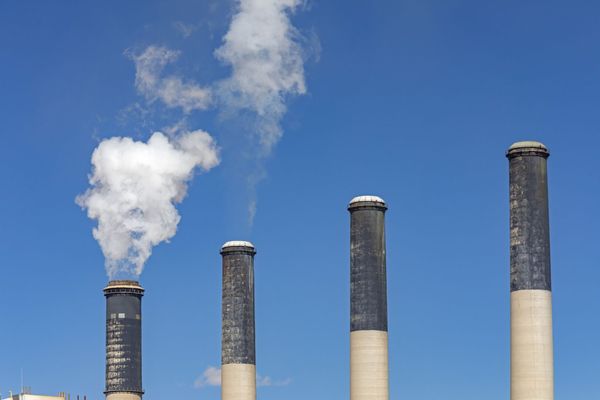
Central banks need to start thinking seriously about raising inflation targets because of climate change.
Global warming is inherently, inescapably, inflationary, so when the countries that have 2 per cent inflation as their formal target get inflation down to 3 per cent, will they cause a global recession for the last 1 per cent, when it’s not caused by excess demand but by climate change?
We’re talking about the United States, Europe, Japan, UK, Norway, Sweden, Switzerland and South Korea, all with 2 per cent targets.
At least Australia’s Reserve Bank has a flexible target of 2 to 3 per cent, but the same principle applies: When inflation in this country is down to 4 per cent, will the RBA really bring about recession and an even greater housing crash than we’ve had already to get it under three?

The most direct and obvious problem is energy prices. While the marginal cost of renewable energy is zero, which means it tends to be deflationary, the transition from fossil fuels is going to take at least a couple of decades, especially in some parts of the world, and in the meantime the declining scale of coal and gas will push their prices up.
This year’s inflation spike was mainly caused by Russia’s invasion of Ukraine and looks temporary, but when the world finally gets serious about tackling climate change, higher carbon taxes will raise the prices of fossil fuel energy well before it has ceased to be in use, and important.
Which is the whole point of carbon taxes – to make fossil fuel energy more expensive.
And that applies just as much to the Labor government’s non-tax method of cutting emissions by tightening the safety mechanism: That will raise business costs, and therefore prices.
But the more insidious problem will be food prices.
Climate and cost-of-living
Since the onset of the pandemic two and a half years ago, the global food price index prepared by the United Nations Food and Agriculture Organisation has increased 50 per cent, having peaked in March up 75 per cent.
Of course, a lot of that increase was due to the pandemic supply chain problems, but global warming is also starting to have a big impact.

For a start, food production – planting, harvesting and transporting it – is energy intensive, and it will take longer for agriculture to shift to renewable energy than, say, electricity.
More importantly, droughts and flooding are seriously affecting crop yields – destroying harvests, disrupting productivity and reducing the amount of arable farmland. The best farmland is often on flood plains where silt has been deposited, and those paddocks are being taken out first and more frequently.
This year’s floods in Australia have inundated vast tracts of cropland and pasture, disrupted transport and raised the price of insurance for farmers.
The recent floods in Pakistan were even worse, with a third of the country under water. That not only affected Pakistan’s food supplies and prices, but also Afghanistan’s, because it relies on importing food from Pakistan.
High winds are inflationary as well: The recent Hurricane Ian in Florida increased orange juice prices by 5 per cent in the US.
In an interview last week, British investor Jeremy Grantham talked about the loss of topsoil in the United States: “The reserves of topsoil in the Midwest have gone from at least a foot to an inch or two … the safety margin has dwindled to next to nothing. If we do not change Big Ag to be less conducive to erosion, we will start to lose productivity pretty soon.”
RBA ‘cannot do anything’
In his most recent speech, RBA Governor Philip Lowe included a chart of the rapidly increasing extreme weather events, and said: “These climate events disrupt production and they affect prices … and it is likely that we will see more of these disruptions in the years ahead.”
But he didn’t then talk about what they plan to do about the “effect” on prices, and definitely did not mention any change to the inflation target.
But surely that is the obvious next step. When asked in the Q&A whether climate change could be added to the RBA’s charter, he replied: “I set the short-term interest rate, as much as I wish that could help solve climate change, it can’t. So I really struggle. Even if … it was added to our charter, what could it mean in practice?”
He said the RBA is spending a lot of time and resources understanding these things, but concluded that “we cannot do anything about it”.
And that is precisely the point.
Central banks can’t do anything about inflation that’s caused by climate change except crush demand with higher interest rates.
If anything, higher energy and food prices will do their own demand destruction so central banks will be forced to cut interest rates, not hike them, to preserve employment (which is actually in their charter, unlike climate change).
It’s going to become clear fairly soon that keeping inflation to 2 or 3 per cent is not compatible with a warming world, at least one that provides enough jobs.
Alan Kohler writes twice a week for The New Daily. He is also founder of Eureka Report and finance presenter on ABC news.







